The Value Proposition of the Point and Click
July 22nd, 2010
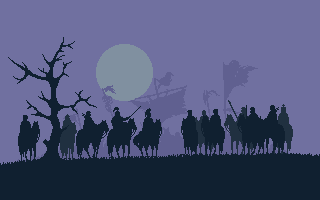
I started playing the classic point and click adventure game, Lure of the Temptress, today and after an hour of play subsequently decided to end my session and probably never load the game up ever again. As I said in my Eternal Darkness post:
The inherent nature of the [old school adventure] genre (fetch questing and rubbing items against random pieces of the environment) relies on the solid construction of puzzles and contextual bits in between to make itself enjoyable.
The reason why the point and click adventure game died out is because the puzzles were so arcane and, as the stories in games from other genres improved, the context (the writing, graphics and characters) was insufficient enough to keep players interested in what is ultimately tedious gameplay. Fortunately this isn’t the case with most modern point and click adventure games such as the ever-continuing Monkey Island and Sam and Max series. Both of these franchises have remained contextually interesting, streamlining interface contrivances and being careful with the way puzzles are structured. The point and click adventure still a bit of an acquired taste—and of largely little interest to younger players—but one sustainable enough to keep itself commercially afloat, and that’s all that matters, really.
In thinking about the old-school adventure games that I’m currently willing to invest in, I’ve been running through this entire thought process of whether my interest in the contextual outweighs the possible staleness of the puzzles and clunkiness of the interface in the mechanical. Revisiting the old Monkey Island games (NOT in HD) is worthwhile, since they’re nostalgic. Beneath a Steal Sky is on my Windows partition, because of my interest in artist Dave Gibbons, the interpretation of a dystopian, overpopulated Australian society and because the interface is stupidly excellent and easy to use. The Resident Evil games are still on my list because I have a fondness for PS-one era pre-rendered backdrops and get a kick out of the story. Grim Fandango interests me because its so damn funny that its worth the torment of non-sensical puzzle design.
In a way, it’s kinda sad that I weigh up the value proposition of games of this genre in such a manner. But there is no denying that the elements which previously illuminated point and click adventure titles (beautifully illustrated graphics, clever dialogue, solid length) have been eclipsed by other genres and that the brick and mortar premise requires fundamental updating and reinvention.
PS. If you are interested in sussing out more of this genre, Kurt Kuluta over at Hardcore Gaming 101 has been covering the genre extensively over the past few months. Maybe you’ll find something you like, even though I’m a bit adverse to the genre, I wouldn’t dissuade you from taking a look see.
PSS. My opinions here are a bit skewed by fact that I haven’t taken the liberty of actively trying some of the great adventure games from the indie scene, many of which excite me and perhaps also evidence the recent growth in the genre. This article is the start of something on-going, I hope.
Player Roles and Heavy Rain
July 17th, 2010

Heavy Rain‘s core conceit is the question: How far would you go for the one you love? Those who have played Heavy Rain will know that this question is most obviously evident in the trials undertaken by the lead protagonist Ethan Mars, but it’s also one which ripples into the tangled stories of the other cast members. To follow through on this question, Heavy Rain establishes relatable characters (through menial, day-to-day context) and puts them in extreme situations which are constructed to press this question. These situations bring the player’s differing roles of agency to the forefront. In many respects, these sequences create deliberation between the different parties that the player occupies, which is why players agonize over their decisions; they can’t get everyone to agree and are forced into a tough compromise. Here is breakdown of the player’s roles of agency and the respective questions asked to each player role at each trial, using Ethan as the model:
Co-author
If I were Ethan, what would I do?
(based on the player’s understanding of the avatar’s principles combined with their own)
Avatar
Within my inferred understanding of Ethan’s character, what do I think he would do?
(based on the player’s understanding of the avatar’s principles, independent of their own)
Viewer
What do I want to see happen, what is most entertaining?
(based on the player’s compulsion)
Director
What is the responsible action, the right thing to do?
(based on the player’s ethical interpretation)
When we play video games, we don’t just act upon our own whim, but rather our actions are influenced by the different ways we engage with the game. When I take the role of Solid Snake inMetal Gear Solid, I share this role with his—the avatar’s—doctrine. I know that Snake is cunning, inventive and stealthy, so my actions are mapped to my understanding of what it means in inhabit this character. I, therefore, have the freedom to act within my own interpretation of the character. This is called co-authorship.
The avatar is also their own character, so they can exist independently of the player. As mentioned in the previous article, there are times when we are not in control of the avatar. For instance, in cut scenes. In these instances the avatar is in their own frame of mind, without our influence, which affects how we think respond to the second question. Another way to think of this is, “if there was a cut scene here, what would the avatar most likely do?”
Different types of games emphasize different roles. Open world action games such as Just Cause 2or Saints Row often feature “empty” avatars or at the very least avatars bent on fun and mayhem, because these games are viewer-centric. That is, the player’s actions are based around whatever seems fun or entertaining. Injecting prescribed character into these avatars works against the impetus of enjoyment as it supposes the player model their behavior around the predefined persona of the avatar. This was apparent in Grand Theft Auto IV, where some players felt uncomfortable with simulating the murder and destruction which the previous GTA games reveled in. Because Niko was a responsible, good-willed avatar such actions would contradict his innocent persona.
The director is the Jiminy Cricket-esque conscience which puts ethical considerations into focus. Normally, most games are ethically sound, but occasional titles, like Heavy Rain, force the player into moments of moral and ethical deliberation. It’s here where we must consider our role as the director of the experience.
All character-based games feature co-authorship and the avatar’s prescribed perspective. In video games the player needs a body to inhibit and a base level persona to model their behavior on; these are basic requisites that determine play. The presence of the other two roles depends on the subject matter of the game. What is most fascinating about Heavy Rain is the way these moments make the player conscious of their multiple identities within the interactive medium. We’re not just making one choice, we’re making many and under pressure.
Design Discussions: Heavy Rain Vs. The People – Forfeiting Control to the Director (A footnote)
July 13th, 2010

[‘Design Discussions’ is a new, regular-occurring column for Kombo by Daniel Johnson, explicating on elements of game design through a case study approach. This piece is a footnote to the initial column Deconstructing the Video Game: Three Pillars of Design for Interactive Drama (Heavy Rain), so it is recommended that you read the prior article first.]
With contextual interactivity, players are somewhat at the mercy of the director. The director is the person who assigns all points of interactivity and the time frame in which they can be initiated, rather than the player. This system coerces players into cooperating with the narrative, and although a handful of people seem to outright refuse this system, it’s a far more persuasive, even-handed approach towards director control than the alternatives. Let us assess the issue of persuasion with traditional video game narrative techniques and conclude with a contrast to Heavy Rain.
Complete Control – In-game Narrative
Broadly speaking, in recent years, in-game narrative has proven to be a very organic and effective way to deliver supplementary narrative and contextualisation. The sound logs in Dead Space which play over gameplay are one such example commonly used throughout the industry (also seeBatman: Arkham Asylum and Bioshock). Despite the successes in conveying minor information, in-game narration is an unreliable way of delivering important information to the player as it only leads the horse to water. As anyone who has ever played with the gravity gun while sitting through one of Alyx’s talky scenes in Half-life 2 can attest, there’s no guarantee that players will cooperate or pay attention, particularly when they’re given the liberty of retaining their regular ability set.
No Control – Cutscenes
So how does one make the player cooperate? By taking complete control away through the form of a cutscene. Cutscenes are embroiled in their own infamy in that they can feel as though the designer is taking over, and in some cases, dominating the interactive experience. Players can get particularly antsy during unskippable or overly long cutscenes, which is why they must be well implemented such as a reward for an extended period of play or to conclude/open a chapter or scene. Even though cutscenes are loathed by some, they are an infallible means of control for developers to steer the narrative.
Partial Control – “Disabled Scenes”
A recent hybrid of the cutscene and in-game narrative (perhaps slanting closer to the latter), are the scenes where the majority of the player’s mechanics are disabled besides those which allow the player to observe (walking, camera movement). Batman: Arkham Asylum‘s introduction scene did this particularly well as Batman and company wheeled a bound Joker into Arkham Asylum, giving air time to the Joker’s menace. These scenes walk the line between the two other techniques.
Conclusion
The problem with these techniques is that it creates rifts of uneven control. One minute you’re playing the game, maybe absorbing some in-game narrative on the side, then you’re passively taking part in an interactive cutscene, which prompts a cutscene with no control whatsoever and then you’re free to keep playing. The gears of interactivity are constantly switched back and forth that inevitably creates a consciousness which removes the player from the experience.
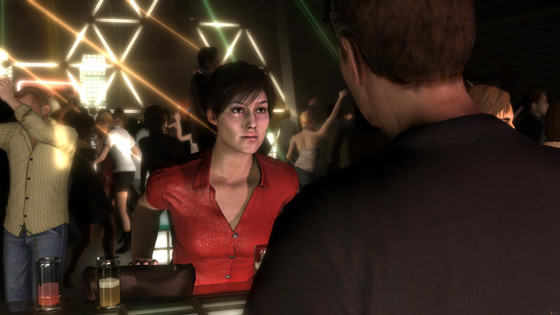
In Heavy Rain, these bumps are smoothed out and the level of control remains constant throughout. There are scenes where you can walk around and explore, and scenes which are closer to interactive cutscenes, yet the disparity between the two is minimal. Heavy Rain also trains the player to always be ready for action from the beginning which allows the switch to be more seamless. This is all very similar to the principles behind Dead Space‘s narrative (the in-game HUD and narrative) where breaks in immersion are avoided. Because the level of control remains consistent, Heavy Rain is capable of creating narrative experiences which are highly immersive, but also avoids the contrived nature of games like Dead Space.



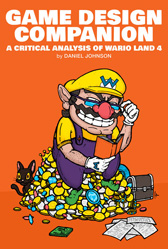 Game Design Companion: A Critical Analysis of Wario Land 4 - $7.99
Game Design Companion: A Critical Analysis of Wario Land 4 - $7.99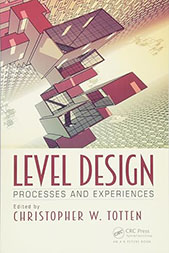 Level Design: Processes and Experiences
Level Design: Processes and Experiences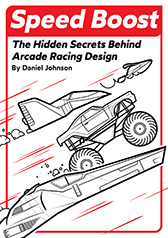 Speed Boost: The Hidden Secrets Behind Arcade Racing Design - $5.99
Speed Boost: The Hidden Secrets Behind Arcade Racing Design - $5.99 Adventures in Games Analysis: Volume I - $5.99
Adventures in Games Analysis: Volume I - $5.99







